#SasanianEmpire
Explore tagged Tumblr posts
Photo

Women in ancient Persia were not only highly respected but, in many cases, considered the equals of males. Women could own land, conduct business, received equal pay, could travel freely on their own, and in the case of royal women, hold their own council meetings on policy. Titles of respect accorded to royal Persian women seem to have derived from the earlier Elamite culture and, most likely, the Median Empire which was the immediate precursor to the Achaemenid Persian Empire (c. 550-330 BCE) founded by Cyrus the Great (r. c. 550-530 BCE). Cyrus established the Persian paradigm of freedom of religion and expression in his empire but was also responsible for maintaining the dignity and autonomy of women of every class. This same paradigm was maintained by the Parthian Empire (227 BCE - 224 CE) although, because of a loss of records and artwork following Parthia's fall to the Sassanian Empire (224-651 CE), not as much is clearly known of the details of women's lives during this period. The Sassanian period is well-documented, however, and women's rights were maintained at the same level – or higher – than during the Achaemenid Empire. Persian women would continue to enjoy this high status in ancient Persian culture until the fall of the Sassanian Empire to the invading Arab Muslims in 651 CE. Afterwards, the long-standing recognition of women as autonomous individuals, capable of deciding their own fate, was replaced by the concept of women as second-class citizens, inherently sinful, and requiring male guidance and control.
129 notes
·
View notes
Text
youtube
Learn about Iran's rich 2,500 year history and why it's so important in today's world. From Persepolis to modern day Iran, this video dives deep into the country's past and its impact on global affairs.Join us as we delve into Iran's rich 2,500 year history and explore why it is so important today. From the ancient city of Persepolis to modern-day politics, this video will give you insight into Iran's past and present.
#iranianhistory#HistoryofIran#PersianEmpire#CyrustheGreat#Achaemenids#AlexandertheGreat#ParthianEmpire#SasanianEmpire#ArabConquest#IslamicPersia#SafavidDynasty#ConstitutionalRevolution#PahlaviDynasty#MohammadRezaShah#IranianRevolution#AyatollahKhomeini#IslamicRepublic#IranIraqWar#PersianCulture#Youtube
0 notes
Text
Erhan Ateş. Kuruluşundan Moğol istilalarına kadar Duvin şehri ve çevresi. Doktora tezi (2022)
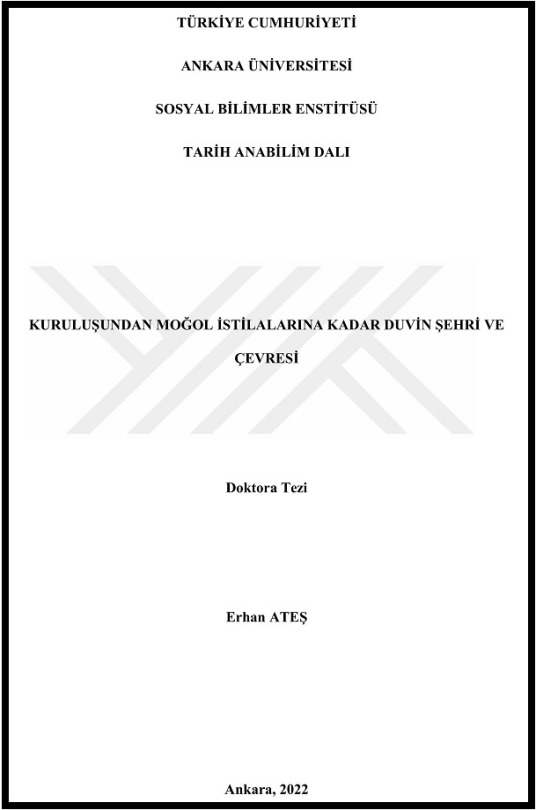
Erhan Ateş. Kuruluşundan Moğol istilalarına kadar Duvin şehri ve çevresi. Doktora tezi (2022) https://www.avetruthbooks.com/2023/09/erhan-ates-kurulusundan-mogol-istilalarina-kadar-duvin-sehri-ve-cevresi-doktora-tezi-2022.html?feed_id=17546
#History#AbbasidCaliphate#ArabianCaliphate#Bagrationidynasty#ByzantineEmpire#Dissertations#ErhanAteş#HistoryofAzerbaijan#HistoryofDvinDuinDwin#Ilkhanids#Khwarazmshahs#Nakhchivanshahs#Rawadids#Sajiddynasty#Sallariddynasty#SasanianEmpire#Seljuqids#Shaddadids#UmayyadCaliphate
0 notes
Photo

#阿富汗文物 #萨珊王朝#SasanianEmpire #爱神#伊丝塔#Ishtar#伊南娜#Inanna #六世纪 #临展#攻金之工:亚欧大陆早期金属艺术与文明互鉴 #清华大学艺术博物馆 #海淀区(在 清华大学艺术博物馆) https://www.instagram.com/p/CpuA0sVP5jc/?igshid=NGJjMDIxMWI=
3 notes
·
View notes
Photo

Anahita Temple at Takht-e Soleyman معبد آناهیتا در تخت سليمان A temple attributed to Anahita, the goddess of water which is located to the northeast of the lake. People used to praise water in this temple. In some periods it was customary, in time of wars, to throw valuable and precious votive objects to the lake and believed that Anahita would protect them against enemies. So, there is hope for great treasure lying at the lake bed! معبد آناهیتا؛ معبد ستایش آب: معبد آناهیتا در شمال شرقی دریاچه در تخت سليمان نیز حائز اهمیت است، چون آناهیتا، الهه آب، مورد احترام ایرانیان باستان بوده است. با توجه به قداست و اهمیت آب در آئین زرتشت و در بین آریاییها، معابدی برای نیایش و ستایش آب احداث گردید كه معبد آناهیتا (الهه آب) یكی از مهمترین آنها بهشمار میآید. در ایران باستان آناهیتا فرشته و نگهبان آب و فراوانی، زیبایی و باروری است. آناهیته یعنی پاک و بیآلایش، این واژه در اوستا برای صفت فرشتگان و اشیاء، بسیار به کار رفته است، غالباً مهر و تشتر (تیر) و هوم و برسم و آب زور و فروغ و غیره به صفت آناهیته یعنی پاکی و بی آلایشی توصیف شدهاند. در آیین زردشتی نگهبانی عنصر آب با فرشته آناهیتا (ناهید) میباشد، یكی از یشتهای اوستا به نام آناهیتا به آبان یشت معروف است، آناهیتا تنها ایزدی است كه اهورامزدا به او پیشكش ارزانی میدارد. ایزدبانوی آناهیتا را میتوان ایزد پیش زرتشتی دانست؛ این فرشته در نزد ایرانیان قدیم دارای مقام بلند و ارجمندی میباشد. #sasanianarchitecture #sasanian #sassanian #sasanid #sassanid #sasanianempire #takhtesoleyman #Solomon #Azargoshasb #Zoroastrian #anahitatemple #goddess #water #WestAzerbaijan #iran #unescoworldheritagesite #آناهیتا #زرتشتى #ساسانيان #آتشكده (at Takht-e Soleymān)
#takhtesoleyman#sasanianarchitecture#westazerbaijan#solomon#زرتشتى#water#sassanian#sasanianempire#zoroastrian#sasanid#goddess#iran#unescoworldheritagesite#ساسانيان#sassanid#آتشكده#آناهیتا#anahitatemple#sasanian#azargoshasb
0 notes
Photo
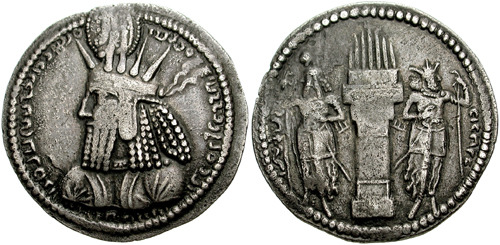
Bahram I was the fourth Sassanid emperor of the third Persian Empire (r. June 271-September 274). He was the eldest son of Shapur and succeeded his brother Hormizd I (r. May 270–June 271), who had reigned for only a year. Bahram I had the prophet Mani, founder of Manichaeism, sentenced to death because Mani was opposed to zoroastrianism.
24 notes
·
View notes
Photo

Ancient Persian culture exerted a powerful influence throughout the Near East, and beyond, for over a thousand years between c. 550 BCE - 651 CE and many aspects of their culture continued to influence others afterwards and up through the present day. The first Persian polity was the Achaemenid Empire (c. 550-330 BCE) which fell to Alexander the Great and, after his death, the region was held by the Hellenic Seleucid Empire (312-63 BCE) founded by one of Alexander's generals Seleucus I Nicator (r. 305-281 BCE). Persian culture continued under the Seleucids, however, and again became dominant with the rise of the Parthian Empire (247 BCE-224 CE) and continued, at its greatest height, throughout the Sassanian Empire (224-651 CE) until the Persians were conquered by the invading Muslim Arabs. From the earliest days of the Achaemenid Empire till the last of the Sassanians, the Persians introduced a number of novel concepts in innovations and inventions which are often taken for granted today or whose origins are largely unknown. Literary motifs, the custom of daily teatime, care for dogs, refrigeration and air conditioning, and many other established aspects of daily modern life originated or were developed by the ancient Persians. The Persians held to an oral tradition of transmitting information, however, and so much of their history, until the Sassanian period, comes from others. A large part of whatever written records of the Achaemenids did exist was destroyed by Alexander when he burned the capital city of Persepolis in 330 BCE and the Parthians retained the oral tradition of their precursors and so much of Persian history was preserved by the Greeks and, later, the Romans. These writers did not always represent Persian culture accurately but provide enough information, coupled with archaeological evidence and what Persian sources remain, to recognize the power and vision of the culture and its enduring legacy. Below are ten contributions and historical facts relating to the Persians which are often overlooked or largely unknown. These are only a notable few, however, and do not begin to address the vast scope of Persian achievement.
175 notes
·
View notes
Photo

Boran & Azarmiduxt: Queens of the Sassanian Empire
Boran (r. 630, 631-632) and Azarmiduxt (r. 630-631) were the only queens of the Sassanian Empire who ruled with the power of absolute monarchs. Daughters of Shahanshah (king of kings) Khosrow II (r. 590-628), Boran and Azarmiduxt, tried to hold the empire together as it grappled with a civil war between two groups of the nobility, the Pahlavs and the Parsigs, and the Islamic invasion.
Boran
Amitchell125 (CC BY-SA)
Aftermath of the Byzantine-Sassanian War
After the Persians experienced a tremendous defeat in the Byzantine-Sassanian War of 602-628, the nobility declared Khosrow II's son Sheroe king of kings. He took the regnal name of Kavad II (r. 628 CE). Khosrow II was then executed by the nobility for starting the war and causing such strife in the Sassanian Empire. To secure his claim to the throne, Kavad II executed all of his brothers and half-brothers and spared only his sisters, Boran and Azarmiduxt. Because of the executions of their father and male siblings, Boran and Azarmiduxt went before Kavad II. They berated him for committing dishonor in taking the crown by killing their father and brothers and not earning it by right. The sisters also cursed Kavad II to have a miserable time in power. It is said that after hearing Boran and Azarmiduxt, Kavad II wept bitterly and tore the crown off his head in shame. After a few short months, Kavad II died of the plague, and his son Ardeshir III (r. 628-630) became the king of kings.
Ardeshir III was only seven years old, and Shahbaraz (r. 630), one of Khosrow II's generals in the Byzantine-Sassanian War, was enraged that a boy became king of kings instead of him. With the backing of Byzantine emperor Heraclius (r. 610-641), Shahbaraz rebelled, had Ardeshir III killed, and took power for himself. Shahbaraz was not a member of the Sassanian dynasty, and the empire's elites hated him because he had no claim to the kingship. The Pahlavs, an influential group of the nobility in the Sassanian Empire, killed Shahbaraz and dragged his body through the streets to dishonor him. The Pahlavs were the same group of people who ruled Persia during the Parthian Empire (247 BCE to 224 CE). They then installed Boran on the throne because she was the only direct heir of Khosrow II left alive who could legitimately take power.
Continue reading...
28 notes
·
View notes
Photo
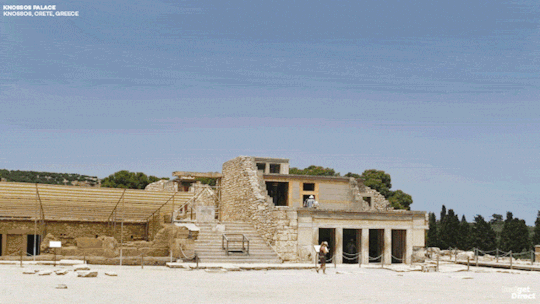
A Gallery of Reconstructed Palaces
In this gallery, we present reconstructions of seven famous palaces through history. The palaces, presented here in the chronological order of their construction, are:
Continue reading...
131 notes
·
View notes
Photo
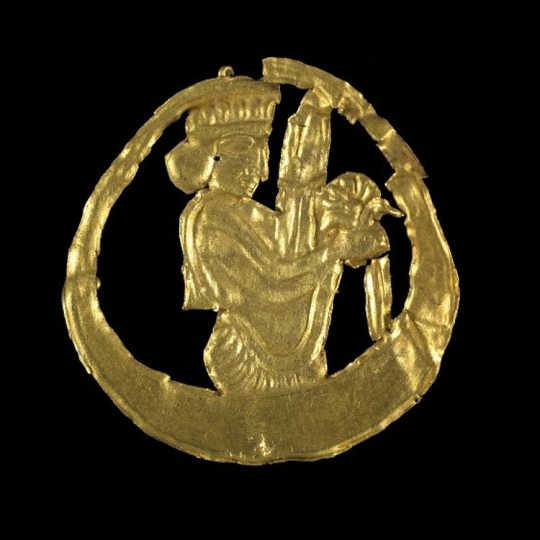
Women in Ancient Persia
Women in ancient Persia were not only highly respected but, in many cases, considered the equals of males. Women could own land, conduct business, received equal pay, could travel freely on their own, and in the case of royal women, hold their own council meetings on policy.
Continue reading...
100 notes
·
View notes
Text
Hüseyin Gökalp. Irak'ın fethi ve İslâmlaşma süreci (Hulefâ-i Râşidîn dönemi). Doktora tezi (2019)

Hüseyin Gökalp. Irak'ın fethi ve İslâmlaşma süreci (Hulefâ-i Râşidîn dönemi). Doktora tezi (2019) https://www.avetruthbooks.com/2023/08/huseyin-gokalp-irakin-fethi-ve-islamlasma-sureci-hulefa-i-rasidin-donemi-doktora-tezi-2019.html?feed_id=17333
#History#AbuBakr#ArabianCaliphate#Dissertations#HistoryofIraq#HüseyinGökalp#Quraysh#RashidunCaliphate#SasanianEmpire#UmaribnalKhattab
0 notes
Text
Fenâyî. Tercüme-i tevârîh-i mülûk: Nevâyî'nin Fars hükümdarları tarihi (2020)
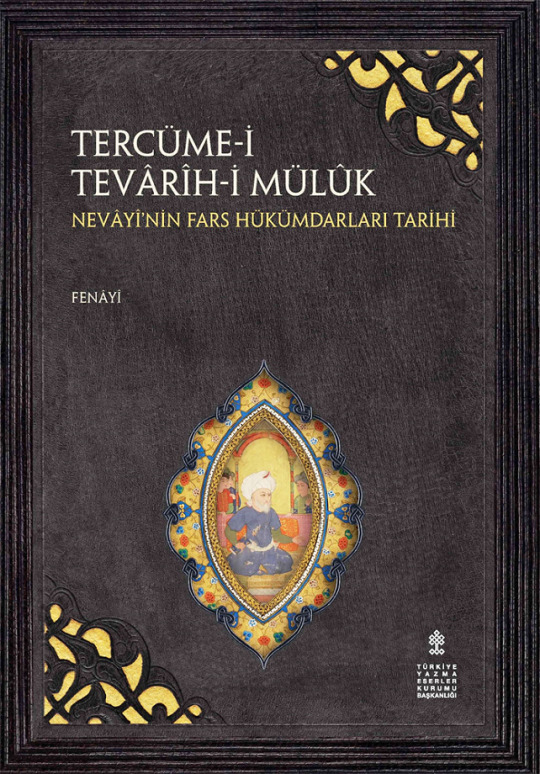
Fenâyî. Tercüme-i tevârîh-i mülûk: Nevâyî'nin Fars hükümdarları tarihi (2020) https://www.avetruthbooks.com/2023/04/fenayi-tercume-i-tevarih-i-muluk-nevayinin-fars-hukumdarlari-tarihi-2020.html?feed_id=16387
#History#AlisherNavai#HilalOytunAltun#HistoricalsourcesinTurkish#HistoryofAzerbaijan#HistoryofIran#ParthianEmpire#SasanianEmpire
0 notes
Photo

Khosrow II
Khosrow II (aka Kosrau II, r. 590-628) was the last powerful shahanshah (king of kings) of the Sassanian Empire. Grandson of Kosrau I (r. 531-579) and near-conqueror of the Byzantine Empire in the Byzantine-Sassanian War of 602-628, Khosrow II was a devout Zoroastrian, whose favorite wife, Shireen, was a Christian. His reign marks the end of classical Zoroastrian culture before the Islamic conquest of modern-day Iran in 651.
Continue reading...
60 notes
·
View notes
Photo
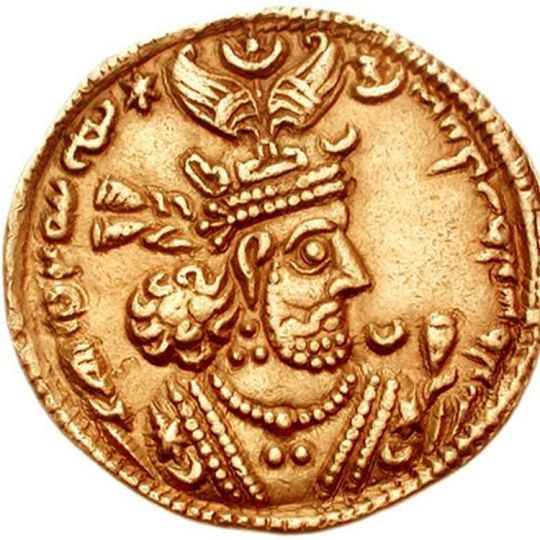
Khosrow II
Khosrow II (aka Kosrau II, r. 590-628) was the last powerful shahanshah (king of kings) of the Sassanian Empire. Grandson of Kosrau I (r. 531-579) and near-conqueror of the Byzantine Empire in the Byzantine-Sassanian War of 602-628, Khosrow II was a devout Zoroastrian, whose favorite wife, Shireen, was a Christian. His reign marks the end of classical Zoroastrian culture before the Islamic conquest of modern-day Iran in 651.
Rise to Power
Khosrow II's father and predecessor, Hormizd IV (r. 570-590), sent his general Bahram Chobin to subdue the hordes of Turkish horsemen who were threatening the Persian Empire. While Chobin successfully ended the threat, Hormizd IV insulted him for losing a minor battle. Chobin was enraged and rebelled against the Sassanian dynasty, the family that had ruled ancient Persia since 224 CE. Then, Khosrow II's uncles, Vistam and Vindoe, also rose in rebellion. The brothers put out Hormizd IV's eye with a red-hot poker.
Continue reading...
50 notes
·
View notes
Photo
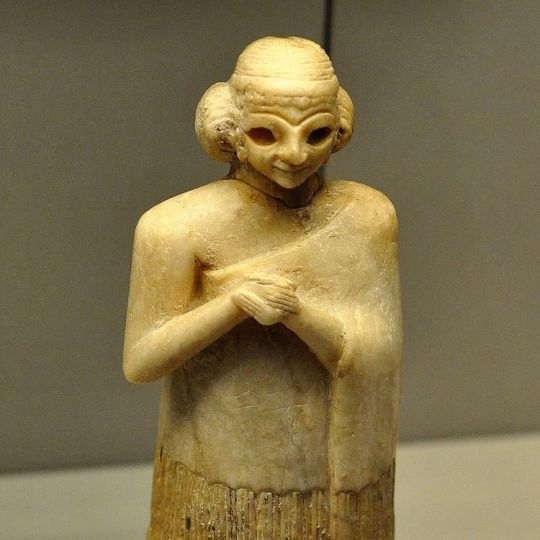
Women in Ancient Mesopotamia
The lives of women in ancient Mesopotamia cannot be characterized as easily as with other civilizations owing to the different cultures over time. Generally speaking, though, Mesopotamian women had almost equal rights, could own businesses, buy and sell land, live on their own, initiate divorce, and, though officially secondary to men, found ways to assert their autonomy.
Statue of a Sumerian Woman
Osama Shukir Muhammed Amin (Copyright)
Continue reading...
97 notes
·
View notes
Photo

The Sassanid Empire c. 620 CE
A map illustrating the rise and expansion of the Sassanid Empire (also known as Erānshahr, "the Domain of the Iranians/Aryans" or Neo-Persian Empire.) Named after the House of Sasan, it was the longest-lived Persian imperial dynasty, enduring from 224 CE until the Islamic conquests in the 7th century. The Sasanians believed themselves successors of the Achaemenids and rivals of the Greco-Roman civilization. The expansion of their power brought perpetual conflict with Rome and Byzantium (at one time holding an Emperor prisoner).
34 notes
·
View notes